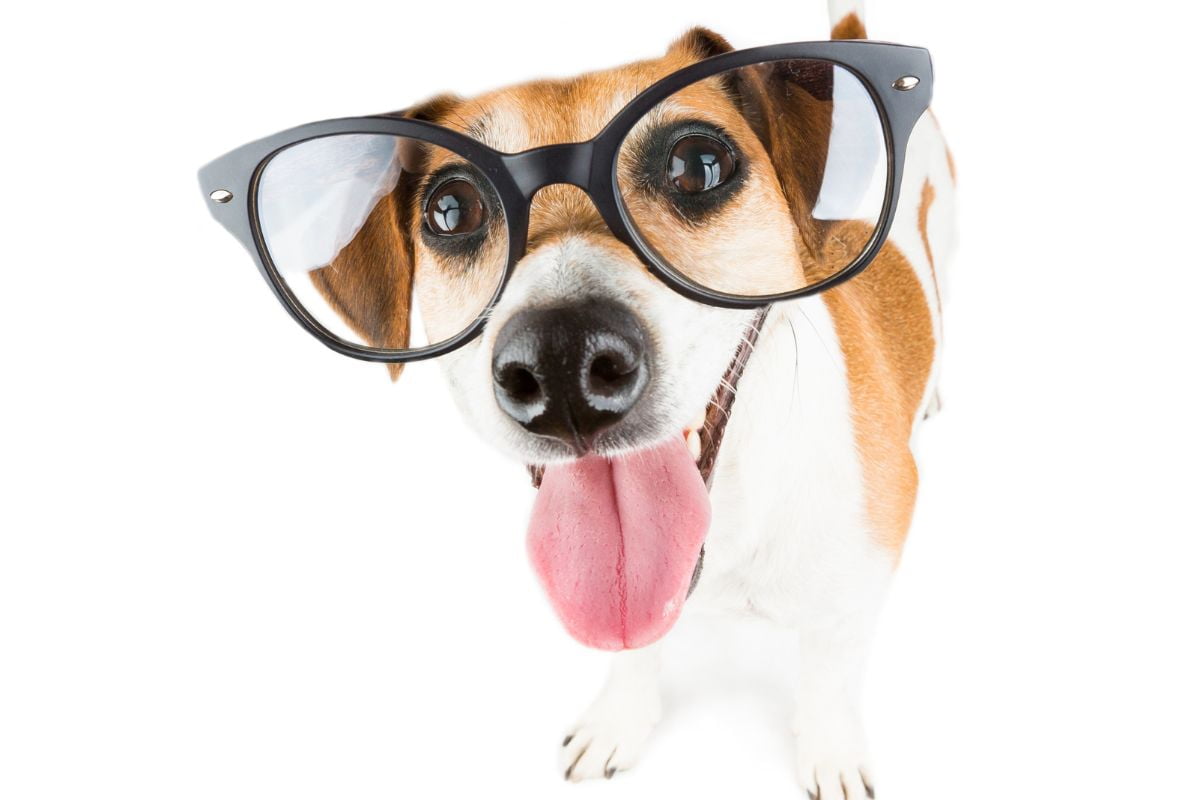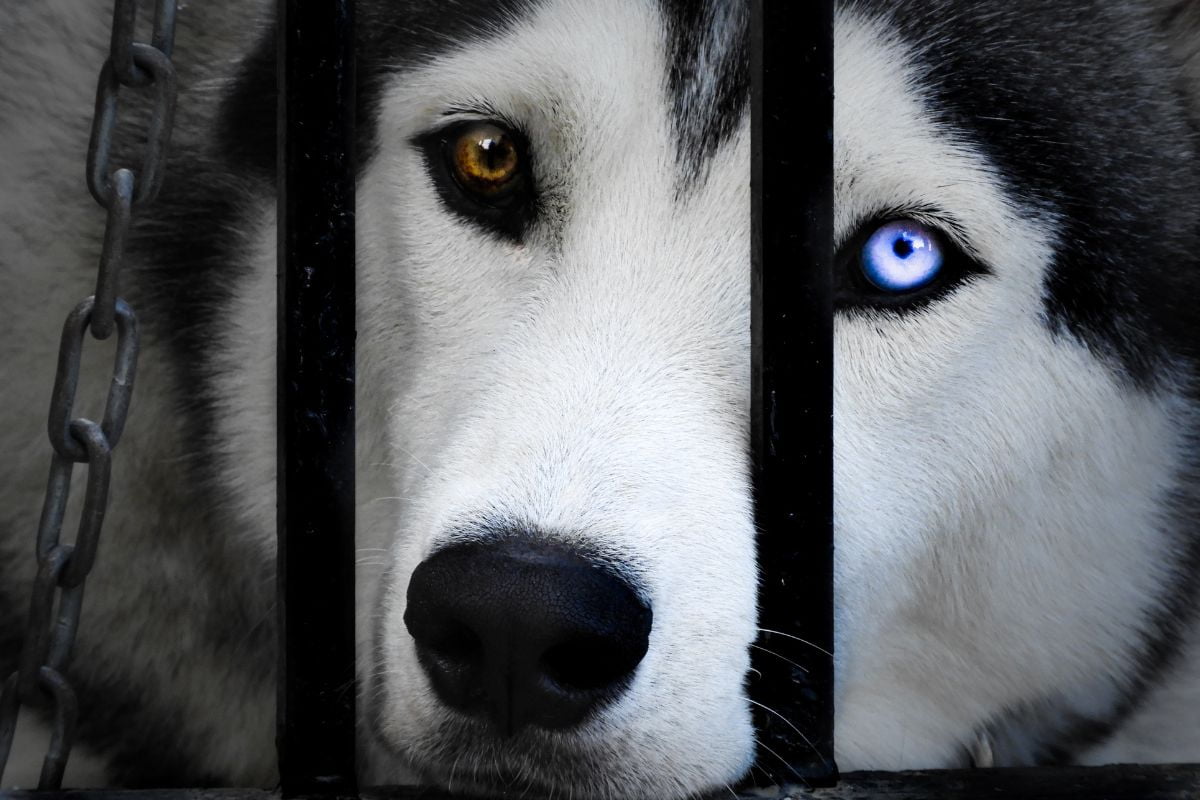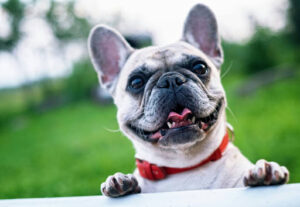Dogs, our loyal and loving companions, perceive the world through a lens that is unique and fascinating. Their sensory experiences, particularly their dog color vision, offer us a glimpse into a world that is rich with nuances and complexities we might never have imagined. In this article, we embark on a captivating journey to explore what lies “Through The Dog’s Eyes” and discover that their vision is more than just a palette of colors.
Dog color vision, often a subject of curiosity and misconception, is a topic that has long intrigued pet parents and scientists alike. Contrary to the widely held belief that dogs are colorblind, recent research has unveiled a different reality. These loyal beings are not entirely devoid of color perception. Instead, they possess a unique way of seeing the world, a vision that is distinctly canine.
In the upcoming sections, we will delve into the intriguing world of dog color vision, shedding light on the scientific aspects of their color perception. We will debunk myths and provide a comprehensive understanding of how dogs perceive colors. Furthermore, we will uncover the evolutionary significance of this unique vision, revealing how it has played a vital role in their survival and development as both hunters and cherished companions.
Beyond their vision, we will also explore how dogs experience the world through their other senses. From their remarkable sense of smell, which serves as a primary mode of communication, to their acute hearing which can detect sounds beyond human perception, dogs rely on a sensory symphony to navigate their environment.
Understanding your furry friend’s perspective is crucial for responsible pet parenting. It’s not just about what they see but how they interpret the world around them. As we uncover the mysteries of dog color vision and their broader sensory experiences, you’ll gain invaluable insights that will strengthen your bond with your four-legged family member.
Dog Color Vision
Can Dogs See Colors?
When it comes to dog color vision, the common belief that dogs are entirely colorblind is a misconception. Contrary to this notion, dogs do perceive a limited range of colors. Their world is not a monochromatic landscape but a spectrum of shades that are different from what humans see.
While humans have trichromatic vision, which allows them to perceive a broad spectrum of colors, dogs have dichromatic vision. This means they primarily see a range of blues and yellows. The key to understanding this lies in the composition of their eyes.
A dog’s eyes contain two types of color receptors or cones: one sensitive to short wavelengths (blue-violet) and another sensitive to long wavelengths (yellow). These cones enable them to differentiate between various shades of blue and yellow but limit their ability to distinguish between reds and greens, which fall in the middle of the color spectrum.
Dog Color Perception:
To delve deeper into dog color vision, it’s essential to understand the specific wavelengths of colors they can see. They perceive blue and violet as blue, and they see yellow as yellow. However, colors like red and green may appear as shades of gray or brown to them. This unique perspective means that your dog’s world is not devoid of color, but it is characterized by a different palette.
Comparing a dog’s color vision to that of humans is intriguing. While we perceive a broad range of colors with distinct names, dogs experience a more limited but still meaningful world of color. Imagine a beautiful field of flowers from their perspective—instead of the vibrant hues humans see, they might see various shades of blue and yellow, making their world equally captivating.
Evolutionary Insights:
The question arises: why do dogs have this unique form of color vision? The answer lies in evolution. Dogs are descendants of wolves, and their ancestors relied on hunting for survival. In the wild, their dichromatic vision was advantageous.
Dogs are crepuscular hunters, meaning they are most active during dawn and dusk when their prey, such as deer and rabbits, is also active. During these low-light conditions, the ability to differentiate between blues and yellows helped them spot movement and track their prey effectively.
Additionally, the color vision of dogs serves them well in their interactions with humans. As our loyal companions, they can perceive our gestures, facial expressions, and even color-coded cues to understand and respond to our commands and emotions.
Beyond Vision
The Power of the Nose:
A dog’s sensory world extends far beyond dog color vision. Perhaps one of their most remarkable senses is their olfactory ability. Their nose is not just an organ for smelling; it’s a gateway to a world of scents that we can barely fathom.
A dog’s sense of smell is estimated to be thousands of times more sensitive than that of humans. They possess up to 300 million scent receptors in their noses, compared to our paltry 5 to 6 million. This extraordinary olfactory prowess allows them to detect scents at incredibly low concentrations, making them exceptional trackers and search-and-rescue dogs.
Furthermore, scent serves as a primary mode of communication among dogs. They can discern a wealth of information about other dogs, animals, and even humans through the scents they leave behind. Sniffing, marking territory, and investigating the environment through their noses are integral parts of a dog’s daily life.
Hearing Sensitivity:
In addition to their acute sense of smell, dogs possess a remarkable sense of hearing. Their ears are finely tuned to detect sounds across a broad spectrum, including those beyond the range of human perception. Dogs can hear high-pitched sounds, such as a dog whistle, which are entirely inaudible to us.
This heightened sense of hearing serves various purposes in their lives. In the wild, it helps them detect the rustling of prey or the approach of potential threats. For domesticated dogs, their keen hearing can be both a blessing and a challenge. Fireworks, thunderstorms, and loud noises can be distressing for them due to their sensitivity.
Touch and Taste:
While dog color vision, smell, and hearing are their primary senses, dogs also rely on their sense of touch and taste to navigate and experience the world. They use their whiskers, located on their muzzle, to gauge the physical dimensions of objects and detect changes in their surroundings. Additionally, their sense of taste, though less refined than their sense of smell, plays a role in determining whether something is safe to eat.
Dogs often explore the world through their mouths, which is why they may chew on objects or lick various surfaces. This behavior is part of their sensory exploration and is also influenced by their innate instincts.
How Dogs Experience the World
Everyday Adventures:
Every day in a dog’s life is an adventure, filled with sensory experiences that shape their understanding of the world. These experiences go beyond mere sight and encompass their incredible senses of smell, hearing, touch, and taste.
Imagine your dog’s morning walk. As they step outside, their keen sense of smell instantly kicks into action. They can detect the traces of other dogs, wildlife, and even the scent of your neighbor’s freshly baked bread wafting from their kitchen. For them, the world is a tapestry of scents, each one telling a unique story.
As they walk, their ears perk up to the sounds of birds chirping, leaves rustling, and the distant hum of a lawnmower. Their acute hearing allows them to pick up on subtle nuances in the auditory landscape, alerting them to potential prey or playmates.
Even their sense of touch comes into play. They use their paws to explore different textures underfoot, whether it’s the cool grass, the rough pavement, or the softness of a carpet. The world is not just something to be seen; it’s something to be touched, felt, and experienced in a multisensory way.
The Role of Dog Color Vision:
While dog color vision may not encompass the full spectrum of colors as humans see it, it still plays a significant role in their daily lives. Dogs use their color vision to distinguish between various objects, and it aids them in understanding their environment.
For example, they might rely on their limited color perception to recognize their favorite toy in a sea of similar objects. They may also use color cues to differentiate between their food and water bowls or to identify their pet parent based on the color of their clothing.
Understanding how dogs utilize their color vision in conjunction with their other senses is essential for creating an enriching and enjoyable environment for them. Providing them with toys and accessories in colors that they can perceive allows them to engage more fully with their surroundings.
The Emotional Connection:
The bond between pet parents and their dogs is a testament to the deep emotional connection that transcends sensory experiences. While dog color vision and their other senses help them navigate the physical world, it’s the emotional connection that truly sets our relationships with dogs apart.
Our furry friends have an uncanny ability to sense our emotions and respond with empathy and affection. They can detect changes in our tone of voice, body language, and even our scent. This emotional connection is a two-way street, as we too can pick up on their cues and understand their needs and feelings.
Tips for Pet Parents
Enrichment Activities:
Engaging your dog’s senses is essential for their mental and physical well-being. Here are some ideas for sensory enrichment activities that go beyond dog color vision:
a. Scent Games
- Create scent trails using treats or toys to stimulate their sense of smell.
- Use puzzle toys that dispense treats when manipulated, encouraging problem-solving.
b. Auditory Stimulation
- Play calming music or nature sounds to create a soothing atmosphere.
- Provide safe and engaging chew toys to satisfy their natural urge to gnaw and explore textures.
c. Tactile Experiences
- Offer a variety of surfaces for them to walk on, such as grass, sand, and different types of flooring.
- Grooming sessions, including brushing and massaging, provide tactile stimulation and strengthen your bond.
Training and Communication:
Understanding your dog’s sensory world can greatly aid in training and communication:
a. Consistency in Commands
- Use consistent verbal cues and hand signals for commands to help them understand your expectations.
b. Positive Reinforcement
- Reward good behavior with treats or praise to reinforce desired actions.
- Be patient and empathetic during training sessions, considering their unique sensory perceptions.
Health and Wellness:
Maintaining your dog’s health and wellness is of utmost importance:
a. Regular Vet Check-ups
- Schedule routine veterinary visits to ensure their overall health.
- Discuss any concerns about their dog’s color vision or other sensory experiences with your veterinarian.
b. Snouters Guarantee
- Familiarize yourself with the Snouters Guarantee, which covers vet charges in case of unexpected health issues.
- Ensure you have access to emergency veterinary care if needed.
By following these tips, you can provide your furry friend with a fulfilling and happy life. Understanding their sensory experiences, including dog color vision, enriches your connection and helps you cater to their unique needs. Remember, responsible pet parenting goes beyond the basics; it’s about creating a sensory-rich environment that fosters their well-being and happiness.
At Snouters, we are dedicated to supporting you on your journey as a pet parent. If you ever have questions or concerns about your pet’s health, sensory experiences, or any other aspect of their life, our team of experts is here to assist you. Your pet’s well-being and happiness are our top priorities, and together, we can ensure they live their best lives, seeing the world through their unique perspective.
Conclusion
Understanding your dog’s sensory world is not just a matter of curiosity; it’s a key to responsible and loving pet parenting. As we’ve explored in this article, our four-legged companions experience the world through a complex tapestry of senses that go far beyond dog color vision. These senses include their extraordinary olfactory abilities, acute hearing, tactile experiences, and their unique way of perceiving taste.
By appreciating and nurturing these senses, we can provide our dogs with a more enriching and fulfilling life. Sensory enrichment activities, such as scent games, auditory stimulation, and tactile experiences, not only engage their senses but also provide mental and physical stimulation. These activities are essential for their overall well-being and happiness.
In the realm of training and communication, understanding how your dog perceives the world is a powerful tool. Consistency in commands, positive reinforcement, and empathetic training methods are the building blocks of effective communication with your furry friend. It’s about bridging the gap between our human perspective and our unique sensory world.
Health and wellness are paramount in ensuring a long and happy life for your dog. Regular vet check-ups, discussions with your veterinarian about sensory experiences like dog color vision, and being aware of resources like the Snouters Guarantee are all essential components of responsible pet parenting.
But beyond all the practical advice, there’s something more profound at play—the emotional connection we share with our dogs. It’s a connection that transcends sensory experiences and goes straight to the heart. Our dogs have an uncanny ability to sense our emotions, provide comfort in times of distress, and share in our joy. This bond is a testament to the deep companionship and love they bring into our lives.
In closing, we encourage you to continue celebrating the unique perspective of your furry friend. Understanding the world through their eyes, appreciating their sensory experiences, and nurturing their well-being are all part of the joyful journey of pet parenthood. As you embark on this adventure, remember that at Snouters, we are here to support you every step of the way. Your pet’s well-being and happiness are our top priorities, and together, we can ensure they live their best lives, seeing the world through their extraordinary sensory lens.











